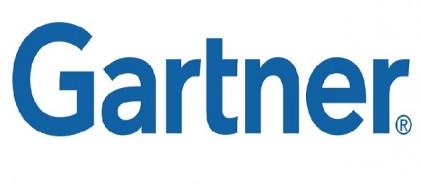Gartner announces rankings of the 2017 Supply Chain Top 25
 "2017 marks the 13th year of our annual Supply Chain Top 25 ranking," said Stan Aronow, research vice president at Gartner. "This year we have an impressive group of leaders with new lessons to share, including two more recent entrants from the high-tech and consumer product sectors."
"2017 marks the 13th year of our annual Supply Chain Top 25 ranking," said Stan Aronow, research vice president at Gartner. "This year we have an impressive group of leaders with new lessons to share, including two more recent entrants from the high-tech and consumer product sectors."|
Rank |
Company |
Peer Opinion1 |
Gartner Opinion1 |
Three- |
Inventory Turns3 |
Three- |
CSR Component Score5 |
Composite Score6 |
|
1 |
Unilever |
2,074 |
649 |
10.2% |
6.8 |
1.9% |
10.00 |
6.39 |
|
2 |
McDonald's |
1,264 |
442 |
13.9% |
174.5 |
-4.2% |
3.00 |
5.27 |
|
3 |
Inditex |
1,192 |
337 |
16.3% |
3.7 |
12.0% |
10.00 |
4.98 |
|
4 |
Cisco Systems |
1,018 |
524 |
8.3% |
13.5 |
0.8% |
10.00 |
4.82 |
|
5 |
H&M |
901 |
208 |
22.0% |
3.0 |
12.5% |
10.00 |
4.63 |
|
6 |
Intel |
952 |
486 |
10.5% |
4.0 |
4.6% |
7.00 |
4.42 |
|
7 |
Nestlé |
1,159 |
345 |
7.9% |
5.1 |
-0.6% |
10.00 |
4.10 |
|
8 |
Nike |
1,290 |
207 |
16.2% |
3.8 |
7.9% |
6.00 |
4.07 |
|
9 |
Colgate-Palmolive |
843 |
313 |
18.0% |
5.0 |
-4.9% |
6.00 |
4.03 |
|
10 |
Starbucks |
926 |
143 |
20.3% |
11.1 |
12.7% |
4.00 |
3.80 |
|
11 |
PepsiCo |
974 |
356 |
8.5% |
9.0 |
-1.8% |
6.00 |
3.67 |
|
12 |
3M |
553 |
210 |
15.3% |
4.2 |
-1.1% |
10.00 |
3.54 |
|
13 |
Johnson & Johnson |
878 |
269 |
11.8% |
2.6 |
0.4% |
7.00 |
3.50 |
|
14 |
Coca Cola Company |
1,579 |
232 |
7.8% |
5.7 |
-4.2% |
4.00 |
3.46 |
|
15 |
Nokia |
315 |
133 |
5.8% |
5.6 |
46.3% |
10.00 |
3.32 |
|
16 |
BASF |
579 |
298 |
6.1% |
4.0 |
-10.6% |
10.00 |
3.21 |
|
17 |
Schneider Electric |
546 |
325 |
4.2% |
5.1 |
-0.3% |
10.00 |
3.15 |
|
18 |
Wal-Mart Stores |
1,312 |
225 |
7.5% |
8.0 |
0.6% |
3.00 |
3.11 |
|
19 |
HP Inc. |
399 |
275 |
6.6% |
9.8 |
-5.4% |
10.00 |
3.06 |
|
20 |
L'Oréal |
657 |
174 |
10.4% |
2.8 |
5.1% |
5.00 |
2.72 |
|
21 |
Kimberly-Clark |
607 |
163 |
11.8% |
6.5 |
-2.6% |
5.00 |
2.68 |
|
22 |
BMW |
681 |
129 |
3.7% |
4.1 |
6.6% |
10.00 |
2.62 |
|
23 |
Diageo |
481 |
190 |
8.9% |
0.9 |
-1.7% |
7.00 |
2.57 |
|
24 |
Lenovo |
498 |
223 |
1.5% |
14.0 |
7.2% |
7.00 |
2.50 |
|
25 |
Samsung Electronics |
958 |
100 |
7.3% |
15.1 |
-3.6% |
4.00 |
2.46 |
Notes:
1. Gartner Opinion and Peer Opinion: Based on each panel's forced-rank ordering against the definition of "DDVN orchestrator."
2. ROA: (2016 net income/2016 total assets)*50% + (2015 net income/2015 total assets)*30% + (2014 net income/2014 total assets)*20%.
3. Inventory Turns: 2016 cost of goods sold/2016 quarterly average inventory.
4. Revenue Growth: (Change in revenue 2016-2015)*50% + (change in revenue 2015-2014)*30% + (change in revenue 2014-2013)*20%.
5. CSR Component Score: Index of third-party corporate social responsibility measures of commitment, transparency and performance.
6. Composite Score: (Peer Opinion*25%) + (Gartner Research Opinion*25%) + (ROA*20%) + (Inventory Turns*10%) + (Revenue Growth*10%) + (CSR Component Score*10%).
2016 data used where available. Where unavailable, latest available full-year data used. All raw data normalized to a 10-point scale prior to composite calculation. "Ranks" for tied composite scores are determined using next decimal point comparison.
Source: Gartner (May 2017)























































